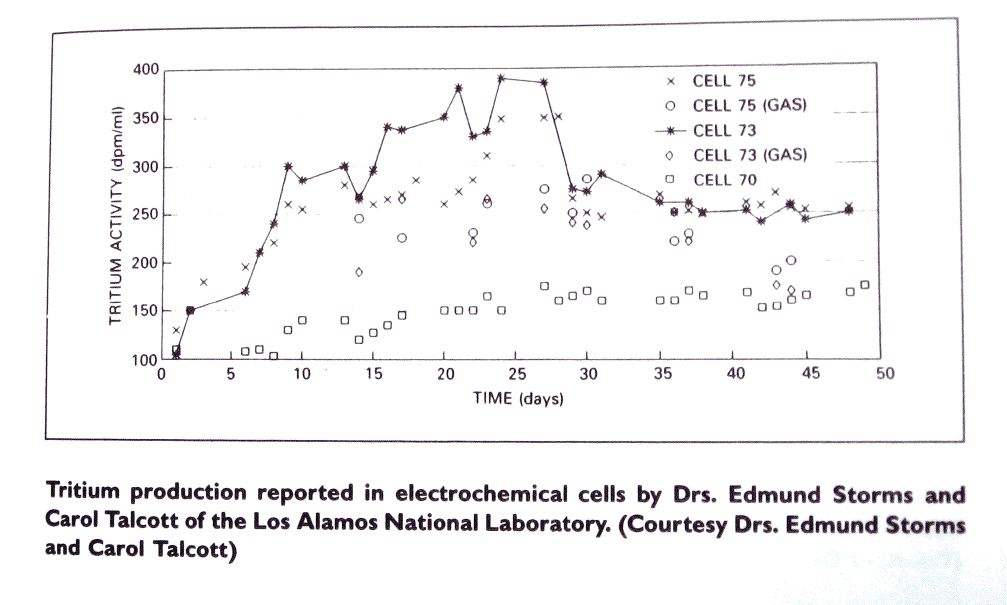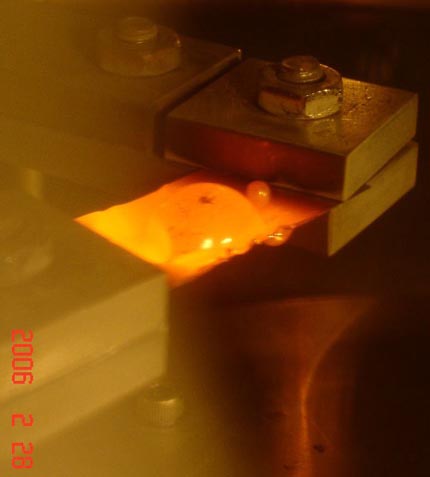We have all suffered a great loss. Gene Mallove was killed on the evening of Friday, May 14. He was at his childhood home in Norwich, Connecticut, cleaning up between tenants, when he was murdered in an apparent robbery. Infinite Energy will provide reports as more details become available.
Gene's tragic death made me wonder once again about the nature of the universe. How can a brilliant, hard working, loving individual who has contributed so much and asked for so little be killed by worthless thugs? Maybe we need to rethink the whole issue of personal defense.
I only knew Gene for about three years, but we became very good friends quickly. The news of his death was probably the most horribly shocking I have ever heard. Gene asked me to be Chairman of the New Energy Foundation (NEF) Board of Directors because of my background and my strong interest in Infinite Energy Magazine and the peripheral projects he was involved in. Neither one of us expected that I would have to do very much hands-on work in that role, but all that has changed. That is how I happen to be writing this.
The NEF is a 501(c)(3) nonprofit foundation that allows contributors to take a federal tax deduction. Its purpose is to promote the exploration of new science and technology that is energy related and out of the realm of conventional paradigms. The NEF does this primarily through publication of IE and secondarily through direct grants to inventors/scientists and organizations working in the "new energy" field.
The NEF was formed in the Fall of 2002. The former company's (Cold Fusion Technology) major assets, including Infinite Energy, were transferred to the foundation. After a lengthy battle with the IRS, Gene was able to get the foundation its non-profit status in July 2003. The NEF Board of Directors believes that the NEF has enough history and enough depth that even though Gene's presence was pervasive, his work can continue without him— and this is surely what he would want from us. The Board of Directors and staff of IE are fully and enthusiastically committed to building on Gene's goals and visions.
We would like to take this opportunity to formally introduce the NEF Board of Directors. Members are Rick Broussard (Vice-Chairman), Mark Aldrich (Treasurer), James Kazan (Secretary), and myself (Chairman).
I am a mechanical engineer (master's degree, Cornell University) with experience in the large corporation world, the defense industry, and extensive experience as an inventor and entrepreneur in the energy and environmental fields. I am currently founder and CEO of Ovation Products Corporation, which has developed a small vapor compression distiller which has broad application in cleaning water for domestic and industrial use worldwide (see Ovationproducts.com). I have about thirty patents and have a great interest in finding creative solutions to address the world's energy and environmental issues.
Rick Broussard is Editor-in-Chief of New Hampshire Magazine and a writer of numerous articles on topics related to culture and science. Along with his role as a board member for the New Energy Foundation, he is a board member of the New Hampshire Stories, Inc. board, a member of the New Hampshire Humanities Council board of advisors, and committee chairman for the New Hampshire Theatre Awards.
Mark Aldrich is currently the Economic Development Director of Claremont, New Hampshire. In December 1999, he retired after working for twenty years for the United States Senate, where he was the N.H. Chief of Staff to United States Senators Bob Smith and Gordon Humphrey. Mark was responsible for the administration of the Senators' four New Hampshire offices and served as the Senators' state representative and intergovernmental liaison, representing them at various events and ceremonies. He also had a major role in advising the Senators on major environmental issues affecting the state. He is a graduate of the University of New Hampshire with a degree in political science (minor in anthropology), and he holds an MBA from New Hampshire College. He is also a licensed NH real estate broker.
Jim Kazan is a New Hampshire lawyer and a partner in the firm of Kazan & Shaughnessy, located in Manchester, New Hampshire. He graduated with high distinction from the University of Iowa College of Law in 1973. Before entering private practice in New Hampshire in 1980, he served as a law clerk to both the United States 8th Circuit Court of Appeals in St. Louis, Missouri, and the New Hampshire Supreme Court. He has also served as an Assistant Commissioner of the New Hampshire Insurance Department and as a New Hampshire Bar Examiner. Jim became acquainted with Gene a number of years ago at Temple Beth Jacob in Concord, New Hampshire, where both of them served on the Board of Trustees. Later, as an officer of the Temple, Jim worked with Gene in presenting a series of lectures on "Science & Religion," all of which featured Gene. Although Jim does not have a formal science background, he is an amateur astronomer and loved talking with Gene about science topics.
The Board of Directors elects and directs the executives of the organization, in addition to other responsibilities (which will now be more formal and broadened). This is still a small organization. Gene was the President of the NEF and Editor-in-Chief of its magazine and Christy Frazier is the Managing Editor of the magazine. Since Christy was active in the business operation of the NEF and IE with Gene, she has recently been given the title of General Manager of the NEF and will perform many of the executive business functions. Her dedication, talent, judgment, and energy throughout this difficult and emotionally draining transition has been amazing. We will need to replace Gene's editorial function and his technical expertise, but the operation is in excellent hands.
There will be a transition period where IE will continue as it has been, but with guest editorials. Readers will be happy to know that the next four issues of IE will primarily be made up of materials that Gene himself had authorized. Decisions regarding direction and content will be mostly made by Christy and myself with input from our Board members, Scientific Advisory Board, past contributors, associates, and friends of Gene who have been involved in some way with the foundation or magazine. There is a great deal of will and ability in this group to not only continue but to build on and improve. We also welcome constructive suggestions from readers as to content, direction, and form.
If there is any silver lining to the awful event of Gene's death it is that I have had the good fortune to know some of these outstanding people that are, and will be, helping. I have also gotten to know Gene's wonderful family better. His wife Joanne, daughter Kim, and son Ethan all have been very helpful in spite of their trauma. The foundation is working with them to ease the transition as much as we can. Kim and Ethan are interested in taking a more active role in helping to continue their father's work and these efforts will be integrated in as time goes on.
None of the foundation's work could get done without money. We are extremely grateful that our major contributors have confidence in the NEF team and have been very supportive. We are also grateful for all the contributions that came in after Gene's death to help assure his work will continue. Of course, every reader is a supporter and we thank you all. One of our goals is to find more like you.
The transition period will probably be four or five issues. During that time we will seek additional Board members to add depth and facilitate activities such as fund raising, finding new editorial talent and new material, and filling Gene's important role as a major new energy contact for inventors, investors, and the press. Gene stated in the last issue (IE #55, p. 6) "that IE must be a mixture of original scientific research and explanatory and motivating editorial material." Explanatory to make "difficult scientific concepts accessible to lay audiences" and motivating because it is not always clear what paths should be taken and many paths are rough. Matching Gene's spirit will not be easy, but we will try our best.
Change will be inevitable because of the people involved and because technology moves on. We will maintain the general high quality of the science reported and will seek as big an audience as possible for such quality. We will continue to be controversial because that is the very nature of new science. We will continue to pull at the threads of the fabric of conventional science and will hope for some good ripping sounds. We have to be able to live with the uncertain and admit that we often don't know the answers. Some theories look good for awhile and then look silly. These are chances we have to take to exist in our chosen niche. We will try to avoid "ownership" of ideas so that we don't acquire a vested interest and lose our sense of openness and fairness. We want to maintain a healthy outlook and perspective so that readers can sense the importance of the science and technology in a proper world view. Hopefully this will motivate activity in directions that yield the most benefit to the planet and to the individuals doing the work.
The Board and management of NEF and IE are dedicated to the cause. We believe this is very important work and can evoke major changes far beyond what the size of our readership might suggest. We are there for the few who are really capable of changing the world. Science and technology drive world change and the spirit of discovery can drive the technology.
We owe gratitude and eternal thanks to Gene Mallove for his important contribution to the world. Founding IE and the NEF is just, to use one of Gene's favorite expressions, "the tip of the iceberg" of what Gene has accomplished for new energy science. The tributes in this special issue are just some of the many proofs that Gene was a good, honest man who fought for what he believed in— in all areas of life, not just science. May Gene's spirit guide us to new heights.






